A small group of American pilots that defeated much superior Japanese forces in the skies over China and Burma during World War II became a symbol of America’s military might and were beloved by the people in war-ravaged China.
The legend of US commander Claire Lee Chennault and his fighting force known as the Flying Tigers is being revived in The Flying Tigers (飛虎傳奇), a four-part documentary television series initiated as a commemorative effort to mark the 70th anniversary of the end of World War II.
A co-production by Taiwan’s Public Television Service (PTS, 公共電視台), LIC China, a documentary production group based in Beijing, and DocuChina of Shanghai, the film examines the life of Chennault and the history of the storied Flying Tigers through archival footage, historical photographs, interviews and digitally rendered aerial combat.
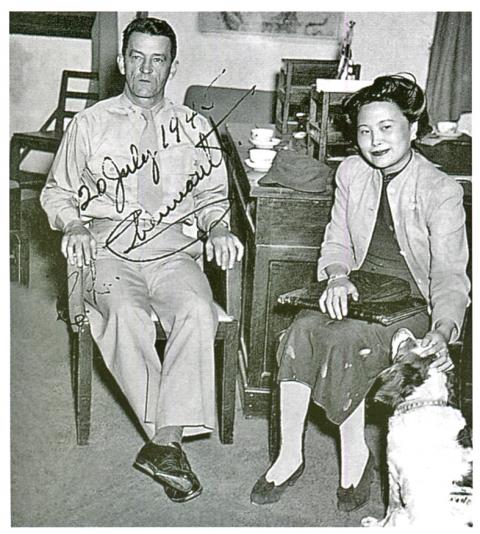
Photo courtesy of Public Television Service
While straightforward in its chronological narrative, the documentary, which covers the period from 1937 to 1945, has strong dramatic elements as it shows the maverick side of Chennault’s personality.
CHENNAULT IN CHINA
The film begins in 1937 after Chennault was forced to retire from the US Army, mostly because his military tactics went against those advocated by the US Army Air Corps. Soon, the dissenter found a good chance to prove himself in China when he was recruited as an adviser for the Chinese Air Force and quickly became a favorite of Chiang Kai-shek (蔣介石) and his US-educated wife Soong Mei-ling (宋美齡).
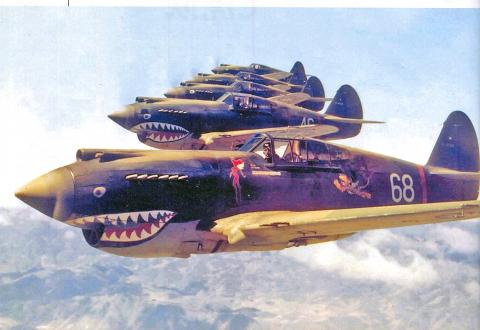
Photo courtesy of Public Television Service
Despite opposition from the US Army, Chennault and his Chinese allies successfully convinced Washington in 1940 to give China planes and pilots to withstand Japanese bombing campaigns. A year later, a group of young Americans arrived in Burma, then a British colony, from San Francisco. They became members of the American Volunteer Group (AVG) under the command of Chennault. Many of the recruits hadn’t been trained as fighter pilots. Some crashed their planes during training, resulting in a number of deaths.
“Many didn’t know what they were getting themselves into,” Chuck Baisden says in the film. Baisden was among the first Flying Tigers to arrive in Burma and worked as an armorer at Hell’s Angels, one of the three squadrons that formed the AVG.
It soon became apparent that Chennault’s unconventional tactics worked. The AVG fighter pilots, who flew the single propeller-driven P-40 fighter with a grinning shark’s mouth painted on its nose cone, started to defeat the previously invincible Japanese planes.
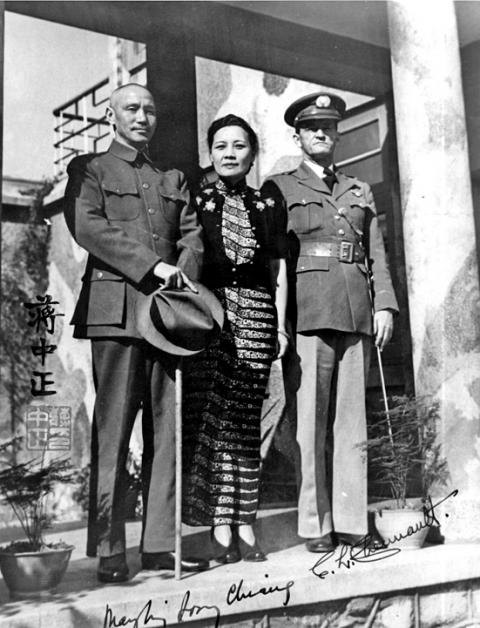
Photo courtesy of Public Television Service
The AVG fought on until July 1942, when it was formally incorporated into the US Army. Chennault had rejoined the Army with the rank of colonel, commanding the Fourteenth Air Force, which the Chinese still referred to as the Flying Tigers.
Interviews with surviving Flying Tigers brings to life the difficulties faced by the recruits. Former AVG armorer Joseph Poshefko, for example, recalls how they fought the seemingly impossible combat amid chronic equipment and ammunition shortages.
“As young, adventurous, dedicated boys, we did the best we could with what we had. They [The Japanese] didn’t give up. We didn’t give up.” Poshefko says.
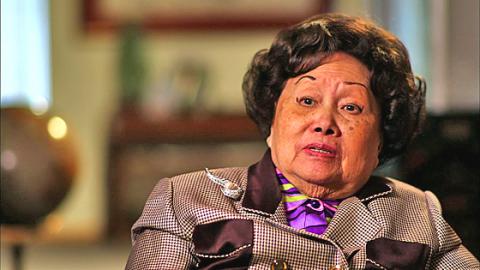
Photo courtesy of Public Television Service
Others tell of the extremely dangerous flights across the Hump, referring to the part of the Himalayan Mountains over which they flew transport planes to deliver military supplies from India to China. It was the only way to resupply Chinese troops.
“It was an ongoing meteorological situation where warm, damp air came up and turned into thunder storms. Thunder storms are extremely hazardous. If a plane gets caught in it, no matter the size, it can be torn apart,” pilot Wilber Maxwell says.
With each plane carrying only three to five tons of supplies at a time, the Hump pilots flew their missions 24 hours a day, seven days a week, regardless of the weather.
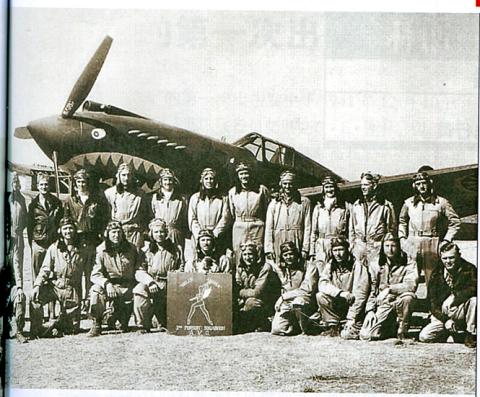
Photo courtesy of Public Television Service
“There was a general who decided that there was no weather too bad for flying, so we flew,” Wilber says.
The airlift lasted for three and half years, during which time some 600 planes crashed when flying across the Hump. More than 1,700 lives were lost.
By 1945, the allied forces succeeded in chasing Japanese planes out of China’s skies. At the same time, Chennault continued to fight a losing battle with his own superiors, American ground commander General Joseph Stilwell, and, later, air force commander H H Arnold. He was again forcibly sent into retirement in 1945, only a few weeks before Japan surrendered.
AFTER THE WAR
A coda to the story sees Chennault retuning to China to build an airline that transported supplies, equipment and personnel. The airline was closely linked to Office of Strategic Services, a wartime intelligence agency and a predecessor of the Central Intelligence Agency, helping to conduct espionage operations for the US in the Cold War that followed. But that is another story.
The four-installment series will air on PTS HD channel at 4pm every Saturday starting this week. More information can be obtained at www.pts.org.tw/theflyingtigers.

Nov. 11 to Nov. 17 People may call Taipei a “living hell for pedestrians,” but back in the 1960s and 1970s, citizens were even discouraged from crossing major roads on foot. And there weren’t crosswalks or pedestrian signals at busy intersections. A 1978 editorial in the China Times (中國時報) reflected the government’s car-centric attitude: “Pedestrians too often risk their lives to compete with vehicles over road use instead of using an overpass. If they get hit by a car, who can they blame?” Taipei’s car traffic was growing exponentially during the 1960s, and along with it the frequency of accidents. The policy

While Americans face the upcoming second Donald Trump presidency with bright optimism/existential dread in Taiwan there are also varying opinions on what the impact will be here. Regardless of what one thinks of Trump personally and his first administration, US-Taiwan relations blossomed. Relative to the previous Obama administration, arms sales rocketed from US$14 billion during Obama’s eight years to US$18 billion in four years under Trump. High-profile visits by administration officials, bipartisan Congressional delegations, more and higher-level government-to-government direct contacts were all increased under Trump, setting the stage and example for the Biden administration to follow. However, Trump administration secretary

The room glows vibrant pink, the floor flooded with hundreds of tiny pink marbles. As I approach the two chairs and a plush baroque sofa of matching fuchsia, what at first appears to be a scene of domestic bliss reveals itself to be anything but as gnarled metal nails and sharp spikes protrude from the cushions. An eerie cutout of a woman recoils into the armrest. This mixed-media installation captures generations of female anguish in Yun Suknam’s native South Korea, reflecting her observations and lived experience of the subjugated and serviceable housewife. The marbles are the mother’s sweat and tears,

In mid-1949 George Kennan, the famed geopolitical thinker and analyst, wrote a memorandum on US policy towards Taiwan and Penghu, then known as, respectively, Formosa and the Pescadores. In it he argued that Formosa and Pescadores would be lost to the Chine communists in a few years, or even months, because of the deteriorating situation on the islands, defeating the US goal of keeping them out of Communist Chinese hands. Kennan contended that “the only reasonably sure chance of denying Formosa and the Pescadores to the Communists” would be to remove the current Chinese administration, establish a neutral administration and